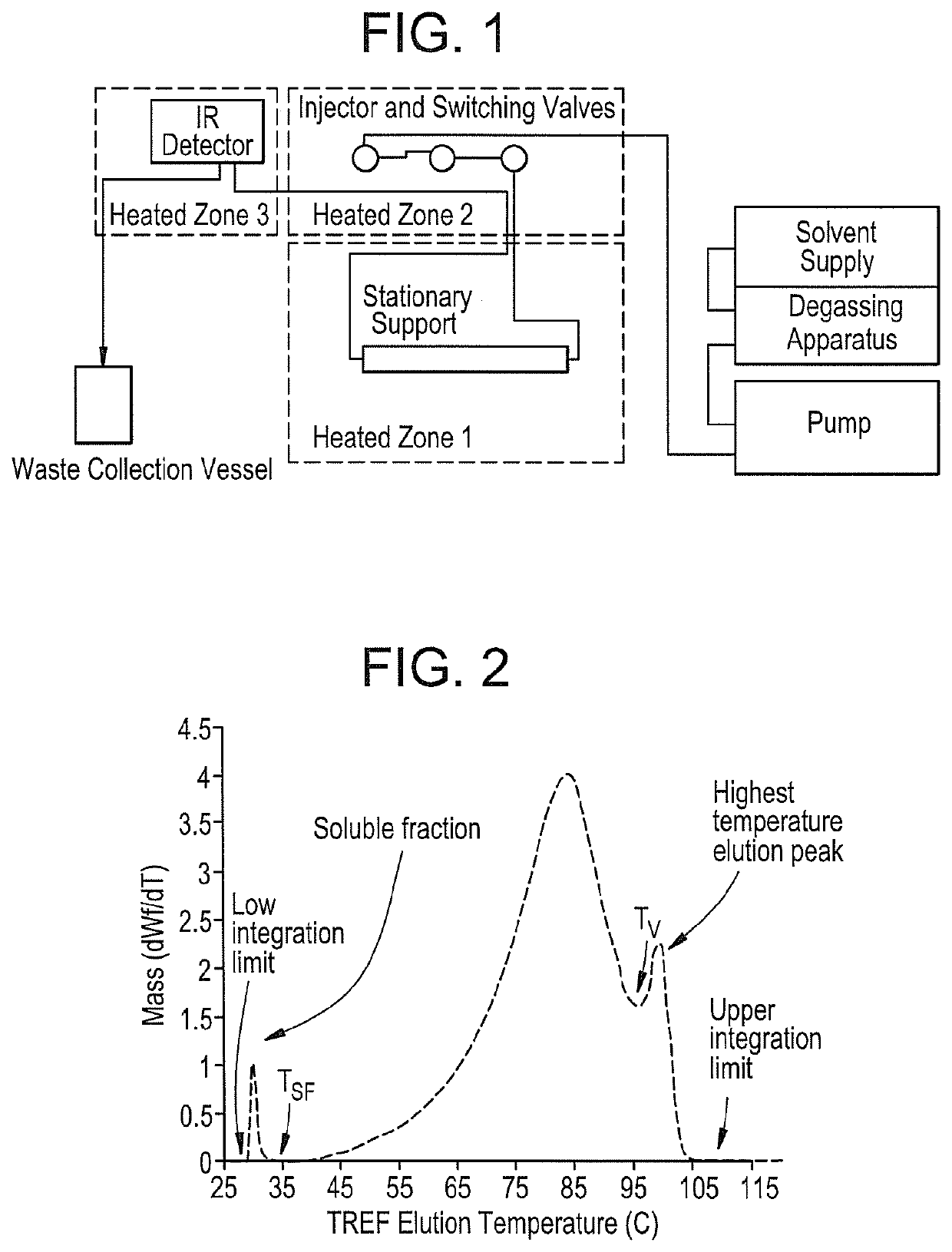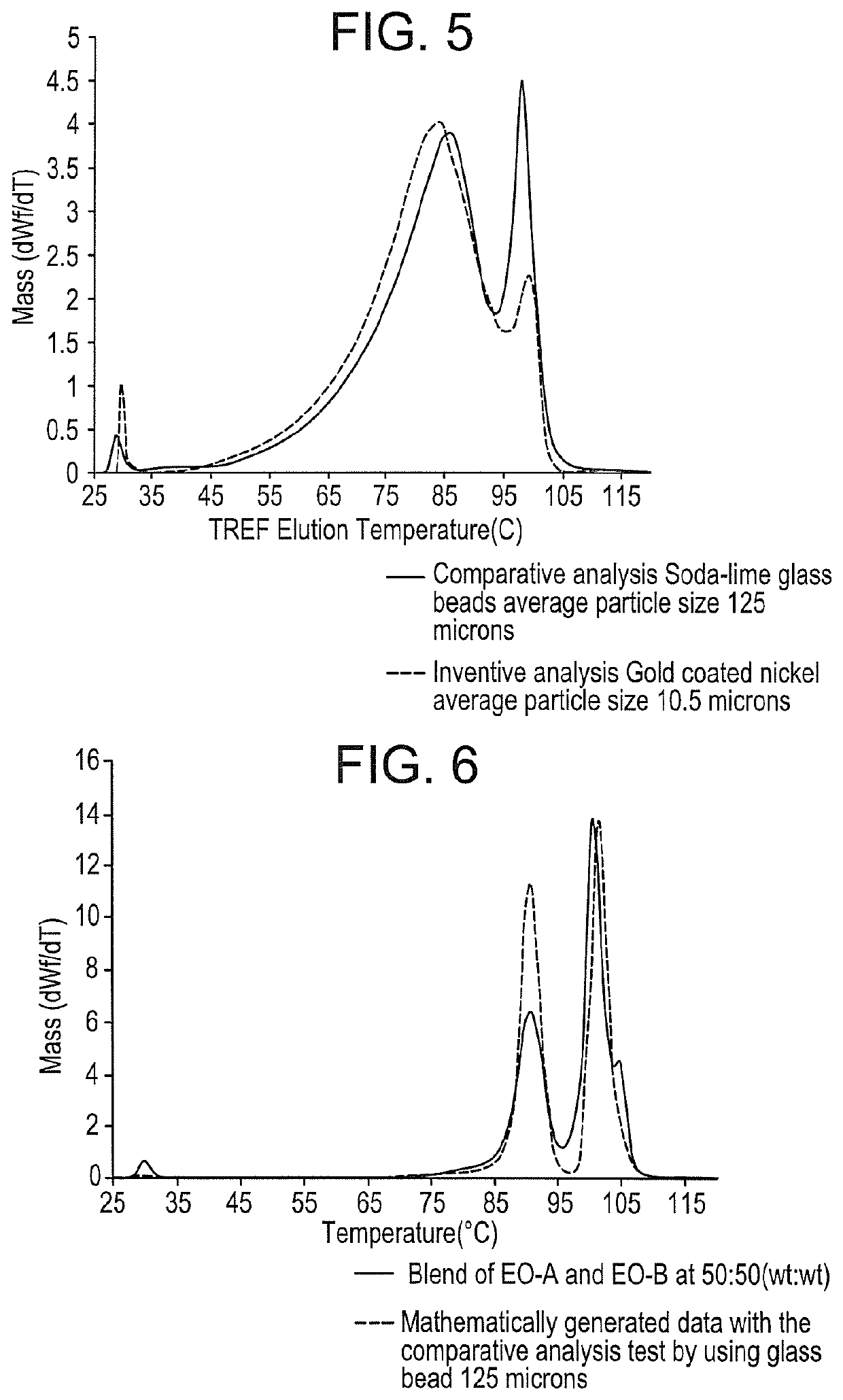Chromatography of polymers with reduced co-crystallization
a technology of cocrystallization and chromatography, which is applied in the direction of crystallization separation, separation processes, instruments, etc., can solve the problems of limited resolution and coelution of techniques, and achieve the effect of increasing the temperature of the supporting material
- Summary
- Abstract
- Description
- Claims
- Application Information
AI Technical Summary
Benefits of technology
Problems solved by technology
Method used
Image
Examples
Embodiment Construction
[0027]New “crystallization based chromatography” methods have been discovered that inert substrate materials (such as gold coated particles) can be used to minimize co-crystallization in the analysis. It has further been discovered that the accuracy of CCD and / or SCBD analysis with the inventive methods is equivalent, or better than, the accuracy of the TREF method of Wild, and the inventive methods require less (for example, less than 5%) of analysis time of the Wild TREF method, for increased sample throughput. The inventive chromatography methods lead to stable and repeatable crystallization results, which, in turn, yield longer column life and more precise data.
[0028]In a first aspect, a method is provided to reduce the co-crystallization Index (CI) in a chromatogram generated by a temperature gradient chromatography; said method comprising the following:
[0029]a) dissolving a composition comprising at least one polymer in at least one solvent, to form a polymer solution;
[0030]b)...
PUM
| Property | Measurement | Unit |
|---|---|---|
| particle size D50 | aaaaa | aaaaa |
| particle size D50 | aaaaa | aaaaa |
| flow rate | aaaaa | aaaaa |
Abstract
Description
Claims
Application Information
 Login to View More
Login to View More - R&D
- Intellectual Property
- Life Sciences
- Materials
- Tech Scout
- Unparalleled Data Quality
- Higher Quality Content
- 60% Fewer Hallucinations
Browse by: Latest US Patents, China's latest patents, Technical Efficacy Thesaurus, Application Domain, Technology Topic, Popular Technical Reports.
© 2025 PatSnap. All rights reserved.Legal|Privacy policy|Modern Slavery Act Transparency Statement|Sitemap|About US| Contact US: help@patsnap.com



